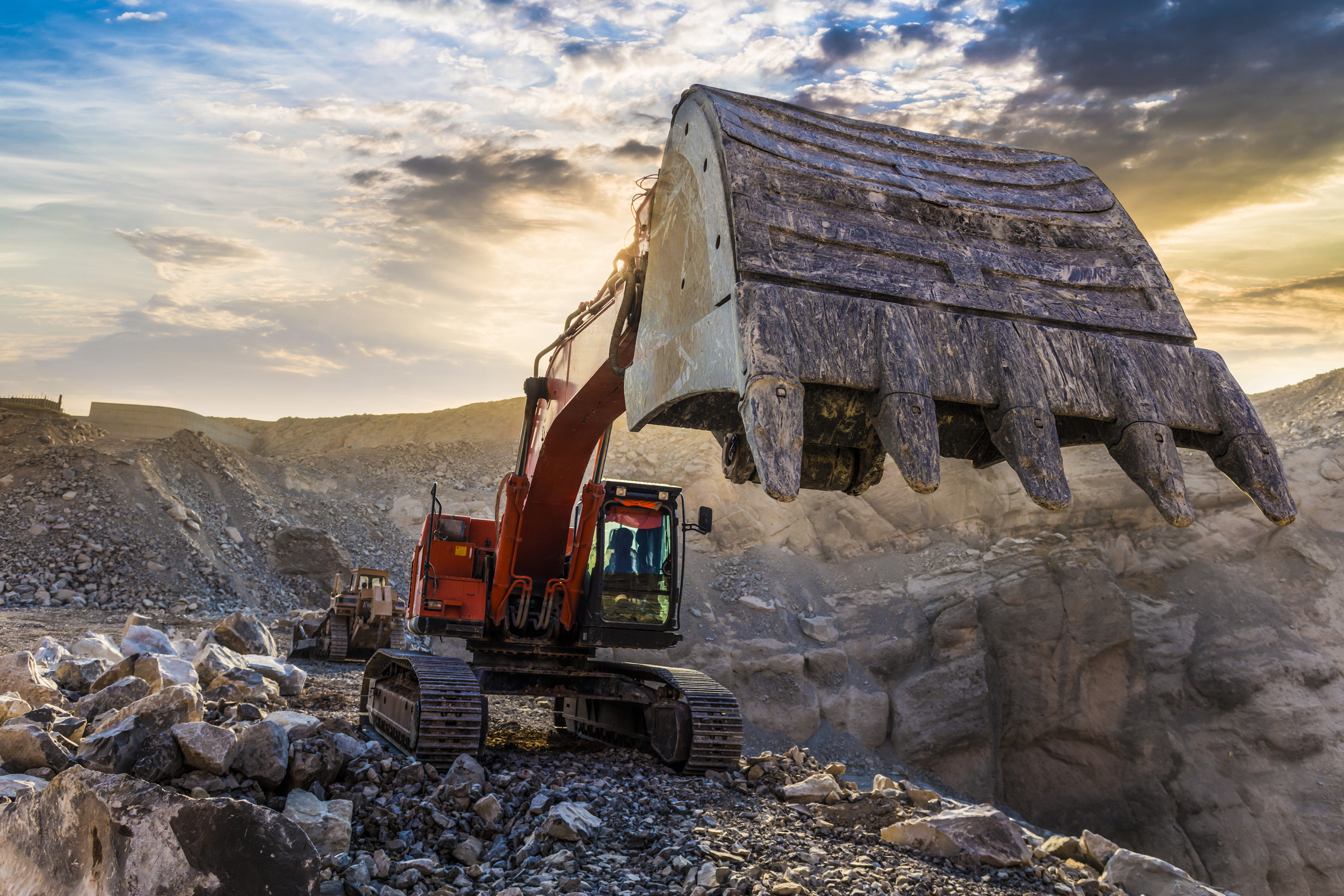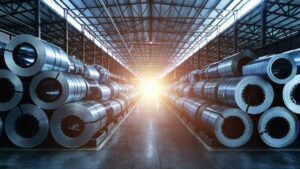Magnetite eyes massive expansion at its world-class, high-grade, ESG-leading iron ore project

Pic: Getty Images
Magnetite Mines could more than double the scale of its proposed Razorback iron ore mine in South Australia to 7Mtpa in a staged expansion to tap into the growing market for high-grade iron ore.
Magnetite Mines (ASX:MGT) is in the throes of a definitive feasibility study on its initial 3Mtpa Razorback project.
Due to come online in 2024 at a bargain cost of around US$423-$500M – that’s a fraction of the capex required for the project when it was first studied a decade ago.
This is still the go-forward case for the upcoming DFS, but with the important additional focus on high-grade iron ore slashing steelmaking emissions – and MGT is already out front on the opportunity to expand beyond its first stage.
According to an expansion study released today, the mine’s scale could be upgraded incrementally from 3Mtpa to 5Mtpa and then 7Mtpa through the installation of two new processing modules at Razorback.
The benefits of going for scope are plentiful. In particular, greater economies of scale would drag down MGT’s breakeven by almost a full third – from US$58 a tonne to U$40/t.
“Magnetite Mines has an inter-generational resource and it was important to ensure our initial path to expansion was supported by robust data that could effectively inform and support stage 1 of our development plans,” MGT executive chairman and CEO Peter Schubert said.
“The Expansion Study demonstrates the Company’s commitment to its long-term development strategy for the Razorback Iron Ore Project and provides further confidence in the significant and valuable optionality realised from progressive expansions of the Company’s extensive Braemar resources.
“The expansion scenarios are extremely encouraging and confirm the potential for a very long-life mining operation supporting higher production rates and point to substantive increases in both IRR and NPV8 coupled with an equally substantive decrease to the projects all-in 62% Fe iron ore breakeven price for the Single-Step Expansion case to US$40/t.”
Premiums galore
MGT’s Razorback is being closely watched because of its status as one of the few high grade magnetite projects approaching development in Australia, a country where declining grades has become a serious issue as premiums for higher quality and greener iron ore products increase.
A single step expansion case has an overall post-tax IRR of 27% and NPV of $2.455 billion, with total development capex of $1.985b at a 62% reference price of US$110/t and exchange rate of 0.71US cents for every Aussie dollar.
The incremental expansion post-tax IRR is much higher at 33%, rising at current reference prices of US$150/t to an IRR of 42% and NPV-8 of $4.598b, with an incremental IRR of 54%.
Those are some attractive numbers and with the big reduction in opex, the payback on the incremental expansion is only two years with plenty of cash to follow. Even more exciting for shareholders is this NPV is 20 times the current market valuation of the company.
But there remains plenty of room to grow.
30 years, billions of tonnes
The expansion study anticipates mining some 1.4 billion tonnes of ore over 30 years of operations which is well-backed by the confidence in the resource, with 83% in the Indicated resource category and just 17% Inferred.
In its first ten years, including the payback of all capital, 87% of material will come from probably ore reserves.
Believe it or not that all represents just 32% of the JORC indicated and inferred mineral resources at Razorback and 24% of MGT’s current resources across the extensive Braemar iron province, providing further opportunities to expand or extend its generational mine life.
“The DFS currently underway has provided us the confidence to formalise our options for the first stages of expansion at our Razorback Iron Ore Project,” Schubert said.
“We are very excited by the results of this study work which underpin our belief in the outstanding returns available from leveraging the benefits of scaling up our large resource in a tier 1 mining jurisdiction with a supportive state government, access to abundant infrastructure and, importantly, low-cost renewable energy.”
Green Steel: High-grade iron ore for low-emission steel
Razorback stands to have some of the best ESG credentials in the iron ore industry thanks to its high-grade product which is increasingly sought by steelmakers globally as they come under pressure to make lower-emission steel. This will require higher volumes of high-grade iron ore and already products of this quality are commanding much higher premiums – another huge Razorback advantage!
Geology and infrastructure factors are also favourable allowing a high-grade product like MGT’s to be produced efficiently, while the available electricity, rail and port infrastructure allows for a competitive operation producing a high-grade, premium product.
ESG leadership: Energy and logistics open expansion pathway
Already around 70% of South Australia’s power production is renewable, that’s expected to rise to 97% by 2025, when Razorback is in full swing and sets MGT up to deliver both cost savings and significantly reduce scope 1, 2 and 3 emissions from its iron ore.
Not only is the power renewable, but it’s reliable and competitively priced with direct access to the source. This puts MGT miles ahead of the sector with a new 275kV powerline expected to be required to support its expansion beyond the initial first phase.
Most remote iron ore projects require the building of standalone power plants.
Other key ESG considerations include building long-term, mutually beneficial relationships with stakeholders including First Nations people, suppliers and employees, and potentially using public wastewater to support expansion.
“We remain focused on completing the DFS and moving to stage 1 of our mining operation with minimum upfront capital and continue to follow a systematic, staged approach to the development of Razorback,” Schubert told Stockhead.
“We continue to advance discussions with potential project partners and financiers and note the project’s sustainability credentials are a critical factor for many industry participants. Through Magnetite Mines’ emerging ESG framework, we are well-positioned to deliver a premium high-grade product increasingly sought for low-carbon steelmaking globally with premiums for higher-grade ores continuing to reflect this position.
“We thank shareholders for their continued support and look forward to further updating the market on our progress as we continue to advance the DFS programme, ensuring expansion optionality is preserved for the benefit of all stakeholders.”
Along with its enhanced ESG credentials, the expansion study will also feature enhanced logistics to support its larger scale.
In particular MGT will establish a rail loop to freight directly from the mine to Whyalla port, already a known export hub for the iron ore industry. In its initial stage MGT plans to send its ore via road to a rail siding before its final trip to port where it will be shipped customers on Capesize vessels.
The rail loop to the Crystal Brook-Broken Hill railway and a train load out facility to MGT’s process plant would cost over $100 million, but would be paid back handsomely via lower operating costs.
“The investment is readily justifiable at production levels of 4Mpta or more as the initial outlay is estimated to have less than a five-year payback due to lower operating costs, exemplifying potential scale economies,” MGT said.
What’s next?
While it has demonstrated the technical viability of increasing Razorback’s production profile long-term, MGT is taking a cautious and considered approach to starting up the high grade mine.
It is still committed to its strategy of a low capex start up. That means further study work on the expansion will sit in the background until after the Stage 1 DFS is completed later this year.
“The DFS will continue to be developed based on 3Mtpa of production capacity with the focus on minimum upfront capital, however the significant potential of the Project to support higher production rates will be factored into Project design to ensure compatibility with future expansion,” the company said.
This article was developed in collaboration with Magnetite Mines, a Stockhead advertiser at the time of publishing.
This article does not constitute financial product advice. You should consider obtaining independent advice before making any financial decisions.
Related Topics
UNLOCK INSIGHTS
Discover the untold stories of emerging ASX stocks.
Daily news and expert analysis, it's free to subscribe.
By proceeding, you confirm you understand that we handle personal information in accordance with our Privacy Policy.








